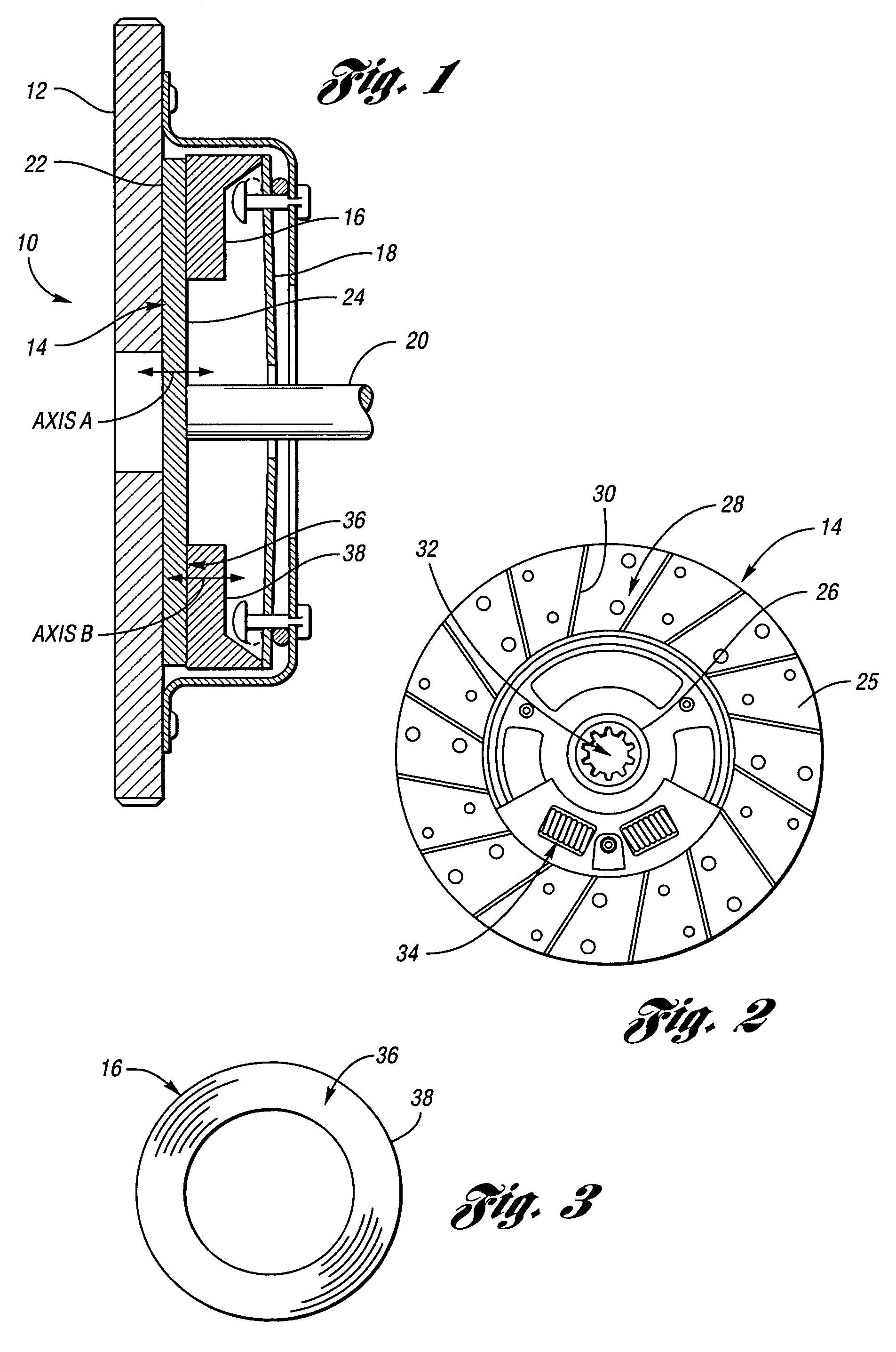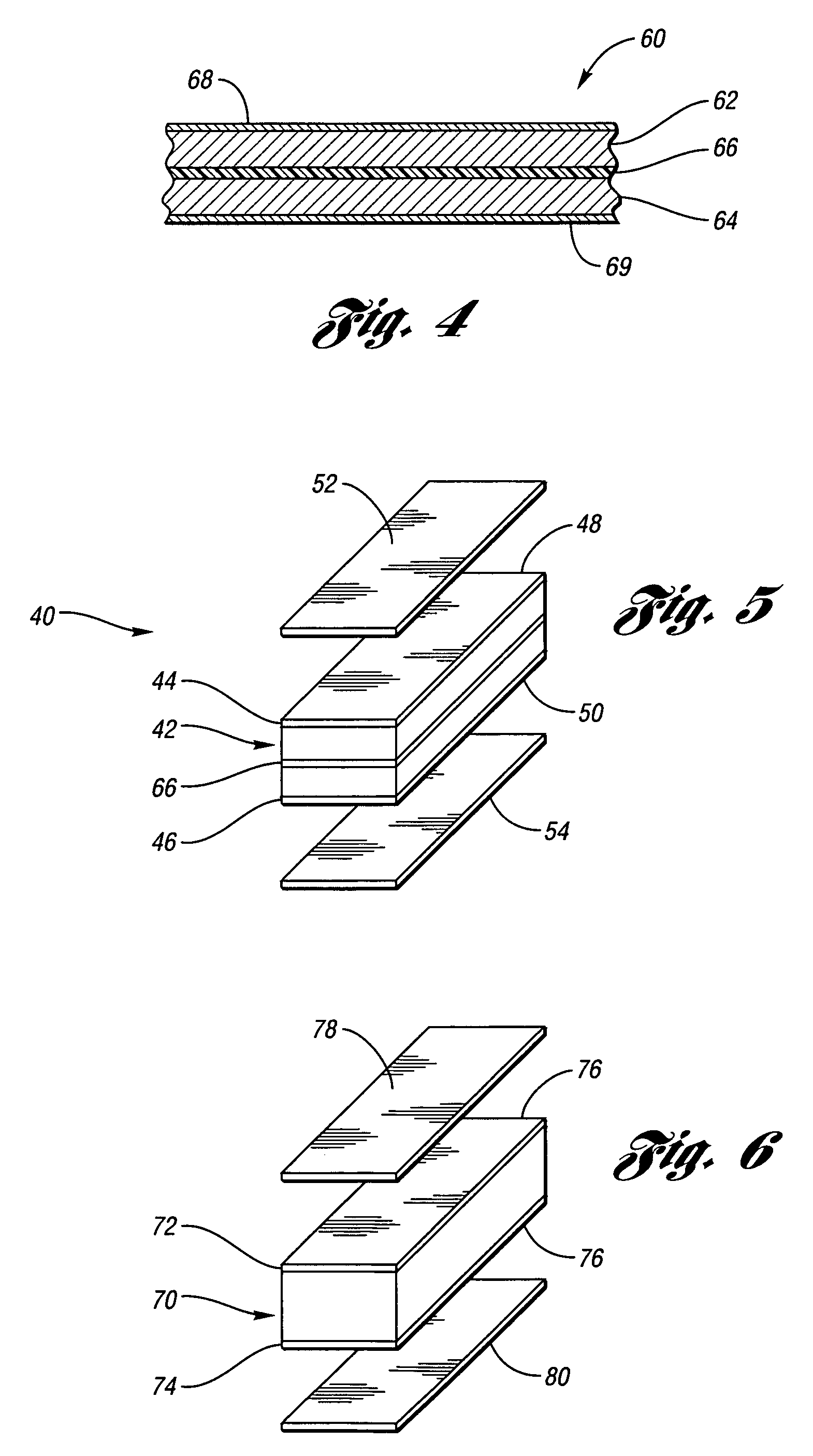Damped clutch plate system and method
a clutch plate and clutch plate technology, applied in the direction of interengaging clutches, shock absorbers, frictional elements, etc., can solve the problems of noise, shutter, vibration, etc., and achieve the effect of reducing vibration and nois
- Summary
- Abstract
- Description
- Claims
- Application Information
AI Technical Summary
Benefits of technology
Problems solved by technology
Method used
Image
Examples
first embodiment
[0019]FIG. 5 is an exploded perspective view of a clutch plate portion 40 formed in accordance with the present invention. Referring to FIG. 5, the clutch plate portion 40 has a plate body 42, having a first surface 44 and a second surface 46. A first layer of bonding material 48 is in contact with the first surface 44 of the plate body 42 and a second layer of bonding material 50 is in contact with the second surface 46. A first layer of friction material 52 is in contact with the first layer of bonding material 48. A second layer of friction material 54 is in contact with the second layer of bonding material 50. Each bonding layer bonds the respective friction layer to the respective surface of the plate body 42. The pressure plate portion 16 may also be constructed using the structure described above.
[0020]In a first embodiment of the invention, the plate body 42 is formed from a laminated sheet vibration damping structure 60, also known as a constrained layer viscoelastic materi...
second embodiment
[0021]In the invention, as shown in FIG. 6, a plate body 70, with a first surface 72 and second surface 74, is configured for use on the clutch plate portion 14 or pressure plate portion 16. A first layer of bonding material is in contact with the first surface 72. A second layer of bonding material is in contact with the second surface 74. The bonding material used is an engineered viscoelastic material 76. The engineered viscoelastic material 76 is used to bond at least one layer of friction material 78 to the first surface 72. The engineered viscoelastic material 76 is used to bond at least one layer of friction material 80 to the second surface 74 of the plate body 70. The thickness of the viscoelastic material 76 is preferably 0.001″ to 0.005″. The viscoelastic material 76 has higher damping than ordinary adhesive such as phenolic resin, and will reduce vibrations and noise. The viscoelastic material 76 can be tuned to damp at different temperatures.
[0022]In a third embodiment ...
PUM
| Property | Measurement | Unit |
|---|---|---|
| thickness | aaaaa | aaaaa |
| thickness | aaaaa | aaaaa |
| thick | aaaaa | aaaaa |
Abstract
Description
Claims
Application Information
 Login to View More
Login to View More - R&D
- Intellectual Property
- Life Sciences
- Materials
- Tech Scout
- Unparalleled Data Quality
- Higher Quality Content
- 60% Fewer Hallucinations
Browse by: Latest US Patents, China's latest patents, Technical Efficacy Thesaurus, Application Domain, Technology Topic, Popular Technical Reports.
© 2025 PatSnap. All rights reserved.Legal|Privacy policy|Modern Slavery Act Transparency Statement|Sitemap|About US| Contact US: help@patsnap.com



